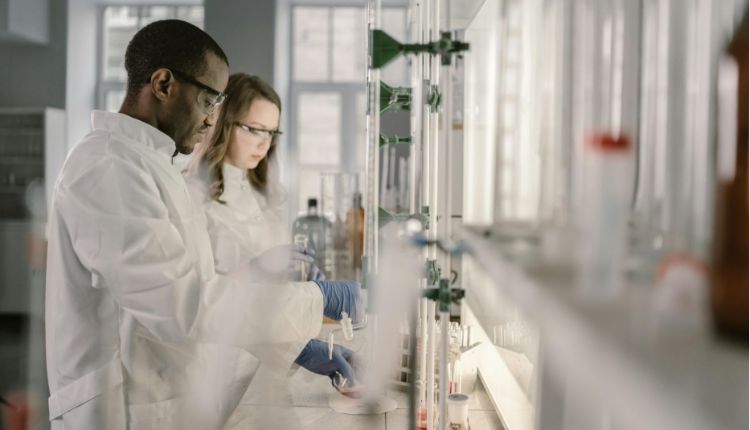Working in a lab can feel like a never-ending juggling act. There’s data to log, samples to process, and equipment that always seems to need calibration at the worst possible time. The pace is fast, the details endless, and the stakes pretty high.
So it’s no surprise that labs everywhere are looking for smarter ways to handle the daily grind. Technology is quickly becoming the secret weapon for smoother, faster, and more reliable operations.
Making Sense of the Data Flood
Every lab collects mountains of data. Some of it’s visual, some numeric, some buried deep in files that no one wants to open again. Imaging systems, for example, are doing a lot of heavy lifting. When it comes to fluorescence microscope images, digital tools can now capture, clean, and store results without a single manual step. That’s a huge shift from how things used to be done.
Modern software doesn’t just save time—it boosts clarity. Researchers can adjust image settings instantly, zoom in on details, and share visuals with teammates halfway across the world. The end result is sharper data, fewer mix-ups, and faster insights. Small changes like that add up to real productivity gains.
Automation Is Changing the Game
Automation isn’t a luxury anymore. It’s becoming a must-have for busy research teams. Imagine a setup where sample prep, pipetting, and labeling all run on their own while you focus on the big picture. That’s what modern automation brings to the table.
Machines don’t get distracted or tired, and they follow protocols with perfect consistency. This means fewer errors and less wasted material. Plus, automation doesn’t replace scientists—it gives them time back. The routine jobs get handled, and researchers can focus on what they’re actually trained for: exploring ideas, testing hypotheses, and pushing science forward.
Cloud Systems Keep Everything in One Place
If you’ve ever lost a crucial file or spent an hour hunting for last year’s results, you know the pain. Cloud storage fixes that. It gives labs one secure hub where everything lives—documents, datasets, images, you name it.
The real beauty of the cloud is collaboration. Teams across different departments or even continents can work together without missing a beat. Files update instantly, and everyone sees the same data version. That alone can save days of confusion. On top of that, it simplifies audits and compliance since records are logged automatically and can be retrieved in seconds.
Smarter Management Through Software
Lab management systems have come a long way. They don’t just track inventory anymore. They schedule maintenance, flag overdue tasks, and monitor progress across multiple projects. Some even sync directly with equipment to report status in real time.
It’s like having an invisible manager who keeps things organized. The software tracks everything—samples, reagents, timelines—and reduces mistakes caused by messy record-keeping. Over time, it builds a detailed picture of how the lab runs. That kind of data is gold for identifying bottlenecks or improving efficiency.
Real-Time Monitoring Saves the Day
There was a time when someone had to be physically in the lab to check if the freezer temperature stayed stable overnight. Those days are fading fast. Now, IoT sensors send instant alerts if something goes off track. Temperature spike? Humidity issue? The system knows before you do.
That’s not just about convenience—it’s protection. A single equipment failure can ruin months of hard work. Real-time monitoring acts like a safety net, catching problems before they turn into disasters. For labs handling sensitive samples, that kind of reliability is priceless.
AI Adds a New Layer of Insight
Artificial intelligence is quietly transforming lab work. It doesn’t replace scientists—it assists them. AI tools can analyze massive data sets faster than anyone could by hand. They detect patterns, highlight anomalies, and even predict where things might go wrong.
For instance, AI can spot subtle issues in fluorescence microscope images that could suggest contamination. It can also study workflow data and recommend ways to speed up certain processes. It’s like having a hyper-focused assistant who never blinks and always finds something you missed.
People Still Make the Difference
Even with all this advanced tech, labs still depend on people. Machines can follow orders, but they don’t ask questions or make intuitive leaps. Human judgment, creativity, and curiosity drive science forward. The best labs don’t automate everything—they find a balance.
Technology takes care of the noise, the repetition, the routine stuff. That leaves scientists free to explore, experiment, and think deeply about what the data actually means. At the end of the day, that’s where real progress happens.
Wrapping It Up
The modern lab is a mix of hardware, software, and human skill working in sync. From imaging tools to automation to AI, every upgrade helps the lab run cleaner and faster. None of it replaces people—it empowers them.
The labs that embrace this shift will stay ahead of the curve. They’ll move from reactive to proactive, from manual to smart. That’s not just better science. It’s better work.






